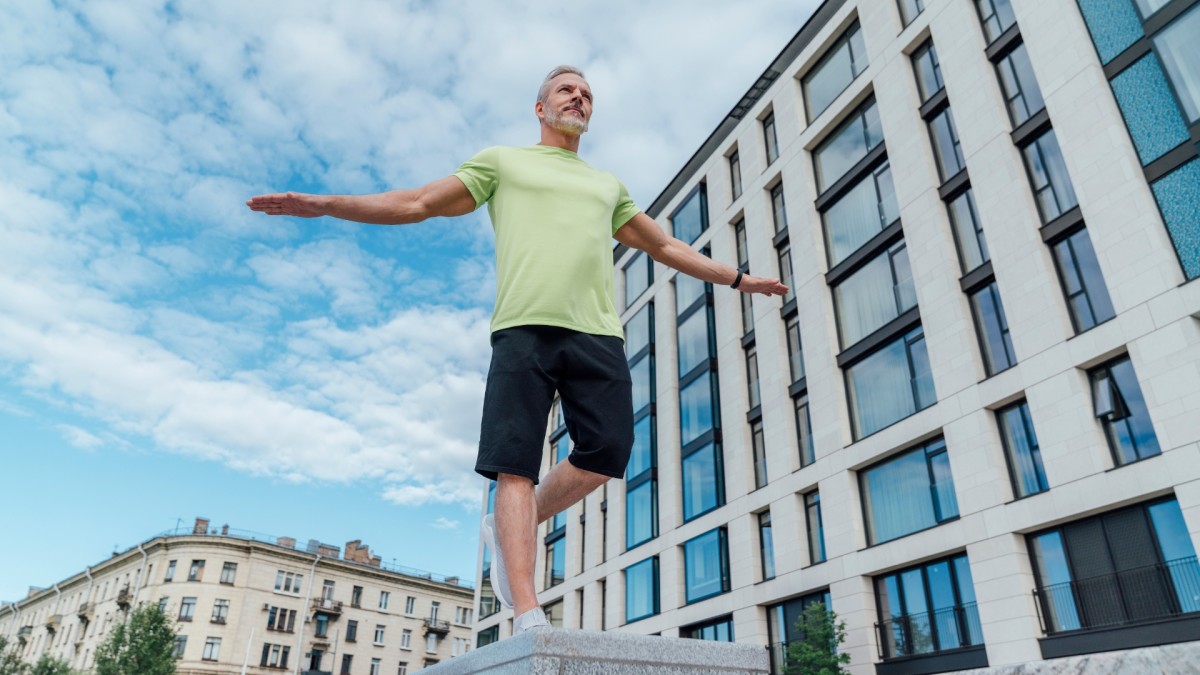How Long You Can Balance on One Leg Reveals This About Your Biological Age

People in blue zones will have you believe aging is avoidable with the right diet, but professionals know one of the greatest ways to maintain well-being as you age is staying active. Turns out there’s a surprising way to gauge whether you’re aging gracefully or not, according to a recent study from the Mayo Clinic.
How long you can balance on one leg is a direct indicator of how well you’re aging, a new study reports. All praise to awkward exercises, after all.
Researchers studied 40 healthy men and women—half over the age of 65, half under. The researchers used walking, balance, grip strength, and knee strength tests to determine age-related decline.
Related: Are You Fit Enough to Finish the 28-Day Calisthenics Challenge?
To test the participant’s ability to balance, they stood on force plates in different ways for 30 seconds—on both feet with their eyes open, on both feet with their eyes closed, on the non-dominant leg with their eyes open, and on the dominant leg with their eyes open.
“Balance is an important measure because, in addition to muscle strength, it requires input from vision, the vestibular system, and the somatosensory systems,” said Kenton Kaufman, Ph.D., senior author of the study and director of the Motion Analysis Laboratory at Mayo Clinic. “Changes in balance are noteworthy. If you have poor balance, you’re at risk of falling, whether or not you’re moving. Falls are a severe health risk with serious consequences.”
Out of all the tests, the researchers found how long someone maintained their balance while standing on one leg—specifically the non-dominant leg—was a greater measure of aging than changes in leg strength or gait.
Falls are the leading cause of injury for adults ages 65 years and older, according to the Centers for Disease Control and Prevention (CDC). In addition, 1 in 4 older adults report falling every year.
Kaufman states that an easy way to negate the effects of aging is by continuously practicing moves like the ones mentioned above. By practicing them regularly you can better your ability to balance and reduce the risk of falling.
“If you don’t use it, you lose it. If you use it, you maintain it,” Dr. Kaufman says. “It’s easy to do. It doesn’t require special equipment, and you can do it every day.”
Related: Split Squat vs Lunge: Which Is Better for Gaining Size and Strength?

